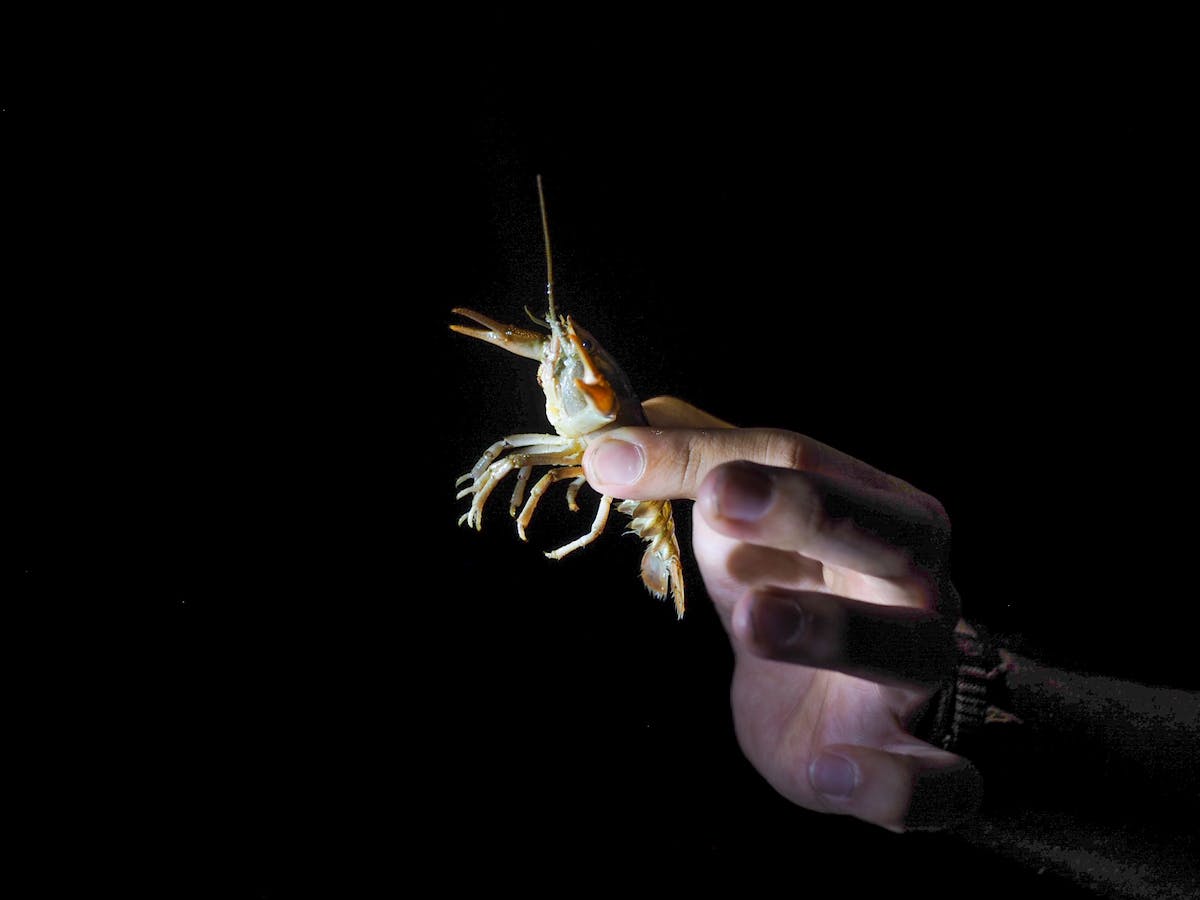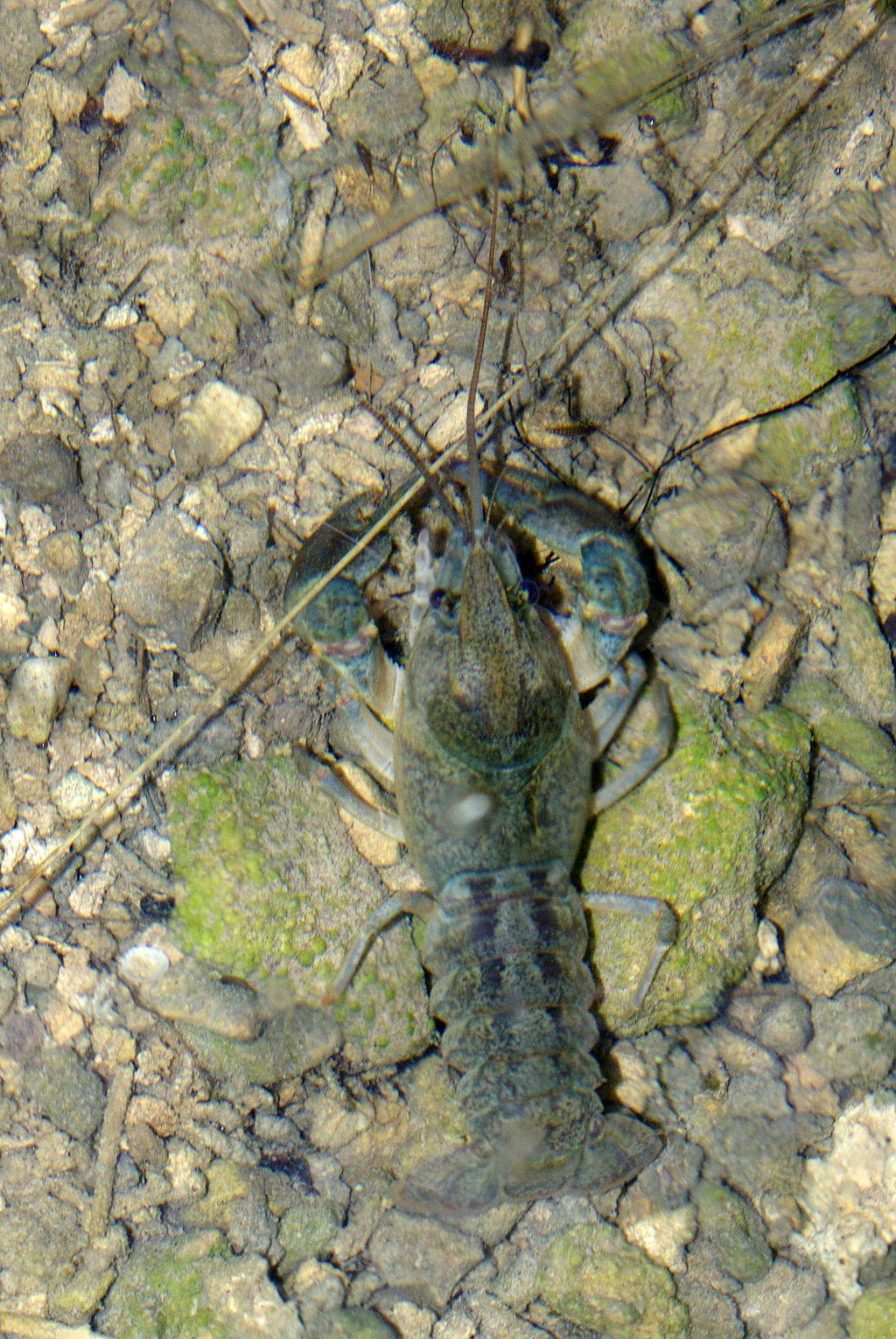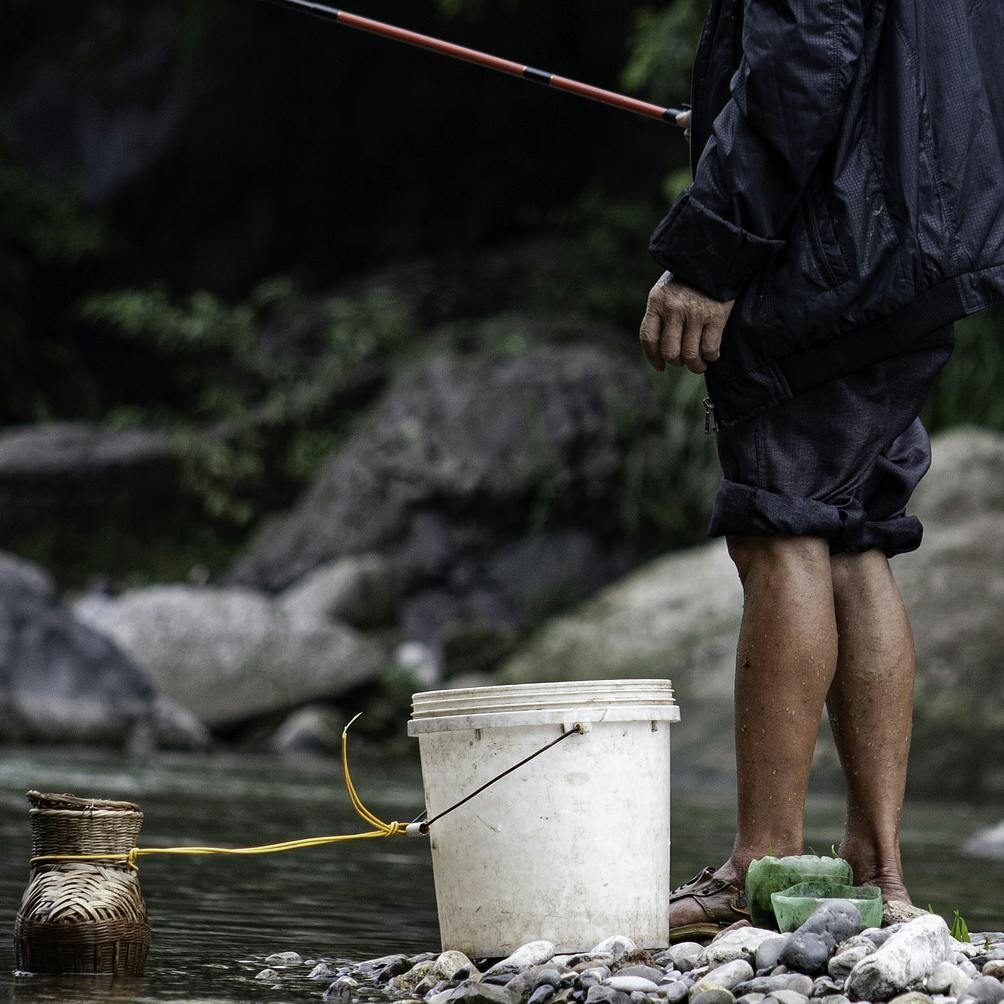- Management Plan
- Total budget: £23,500
- Budget spent: £16,933
- Status: In Progress
The white-clawed crayfish (Austropotamobius pallipes) is somewhat of a superstar of freshwater streams. It claims an impressive collection of ecological accolades as a keystone species, ecosystem engineer, flagship species and bioindicator of habitat quality. This incredibly resilient crustacean has a lineage dating back 250 millions years!
Today, however, white-clawed crayfish are in hot water in the streams of Italy’s Central Apennines and are now an endangered species. This project is designed to bolster populations of white-clawed crayfish across key catchments of the Central Apennines. We are supporting Rewilding Apennines to protect critical riverfront habitat on the Gizio river and to establish a new crayfish breeding centre.
Project Timeline
Q2 2026
Release of juvenile white-clawed crayfish.
Q4 2024 – Q2 2026
Field operations: buying and installing equipment to improve the breeding centres’ functioning. Catching founding populations of crayfish from the wild.
An Ancient Ecological Powerhouse
The white-clawed crayfish stands out as freshwater species for its impressive mix of ancient lineage and ecological impact. It is a living relic with a lineage going back 250 million years, preceding the Triassic period. Its role in the ecosystem is also extraordinary.
Known to cover a wide spectrum of ecological functions, they are considered a keystone species, ecosystem engineers, flagship species and bioindicators of habitat quality. This aquatic creature clearly has a disproportionate impact on its habitats.
Read on to learn how its presence helps bring ecological balance in the rivers and streams they inhibit.
Header photo & below: Bruno_D'Amicis & Carlos Samuel Garcia Bas

Ecosystem engineers
Built with a mechanical yet agile exoskeleton, the white-clawed crayfish is well equipped to traverse fast-flowing streams and navigate rocky waters. As it burrows in search of food and buries to hide away from predators, the crayfish affects sediment buildup on stream and river beds. As such, their movement and feeding behaviour positively influences nutrient cycling and the quality of the habitat, benefiting other aquatic species.
A key player in trophic webs
The crayfish is also an important link in the web of interactions as both a predator and prey species. Armed with large imposing white claws, crayfish are omnivores that devour a wide variety of other species and matter. This easy-to-please eater has a diet consisting of macro-invertebrates, small vertebrates and aquatic plants. Feeding on both living and decaying plants and animals, the crayfish is one of nature’s cleaners. Studies show this opportunistic feeder affects the composition of species in the community. For example, by cropping stands of aquatic vegetation with its claws, crayfish control the amounts of plant-living invertebrates. Also, by shredding leaf litter, it supports collector species who mop up the remains of particulate matter.
An abundance of white-clawed crayfish is also vital for predating species. Many different mammals, fish and birds feed on them. Otters, eels and herons are a few examples of animals who predate on crayfish.
Bioindicators or surrogates for water quality
White-clawed crayfish settle in streams, rivers and ditches by silt and stone beds with clear, well-oxygenated water and free of pollutants. Their preference for more pristine aquatic conditions means they act as a biological indicator of environmental integrity in regions like the Apennines.
A novel invertebrate flagship species
Flagship species are those who hold an appeal to the public for being charismatic and ecologically significant. These roles are usually reserved for attractive mammal species, such as the panda, with invertebrates receiving far less popularity. The crayfish, however, challenges this trend and is considered a flagship species because of its outstanding ecological impact, longevity and cultural importance.

The Threats
Despite surviving for millions of years, the crayfish is now precariously clinging onto existence in many regions. Between 1999-2009 in Italy, native crayfish populations declined 74%. More recent local surveys in the Abruzzo Region show similar worrying trends. Populations have vanished from the Gizio River and massively decreased in the Verde and Romito Rivers. The 2010 IUCN assessment places the white-clawed crayfish on the Red List of Threatened Species as Endangered.
Several serious threats are facing the species, including:
- Human Impact: Alterations to catchment areas, canal construction, dams, and water withdrawals negatively impact crayfish habitats.
- Climate Change: Aquatic environments are being disrupted by rising temperatures, reduced precipitation, and water acidity.
- Poaching: Illegal crayfish capture has increased, particularly across open European borders.
- Invasive Species: Non-native crayfish and fish species introduce diseases and compete with native crayfish.

The ‘crayfish plague’
In the mid-nineteenth century in Italy, non-native species of crayfish were introduced to watercourses with the intention of restocking local populations. Unbeknown at the time, the non-native species were vectors of what’s known as the ‘crayfish plague’ caused by a fungus called Aphanomyces astaci. Invasive non-native species like the signal crayfish (Pacifastacus leniusculus), although immune to the disease themselves, are hosts for the pathogen. In 1859, the first occurrence of crayfish plague was recorded, wiping out populations of native species, who have no natural resistance. Still today, the disease has a devastating effect on white-clawed crayfish in many regions. With a high mortality rate, often 100%, whole populations are decimated only weeks after the disease enters a waterway.
Targeted reintroductions: Avoiding the plague
In spite of the threats, there have been positive results from conservation initiatives in the UK, France and Italy to restore native populations. As the crayfish plague requires a host, without it the fungus can only survive for a limited period (a few hours to several weeks). If efforts to reinforce populations after an outbreak are targeted at waterways where no alien crayfish exist, the risk of infection is greatly reduced.
Reintroductions should be complemented by measures that address the spread of disease in other ways. As the crayfish plague can be carried via contaminated equipment such as fishing gear, there is a need to raise awareness among local river users of the issue and inform them of best practices, such as disinfecting equipment.

Our Project
River restoration in the Central Apennines
This project fits into the wider efforts to strengthen white-clawed crayfish populations across key catchment areas of the Central Apennines. Specifically, the restoration work done by Rewilding Apennines on the Liri and Verde Rivers. The broader strategy for the region, designed by Rewilding Europe and Rewilding Apennines, is to restore its rivers by returning keystone species and removing dams.
The Objectives
To scale the work already underway in the Liri and Verde Rivers, we are supporting Rewilding Apennines to achieve the following:
- Support the crayfish comeback through the establishment of a white-clawed crayfish breeding centre at Pettorano sul Gizio. This is one of three breeding centres set up to restock the Central Apennines watercourses. Our support is covering the setup of the centre’s operations and staffing, monitoring of the animals in the wild and other fieldwork.
- Restore the natural river dynamics through land acquisition. In the area adjacent to the breeding centre, the Giozio river creates a natural meander during times of high water. By slowing water flow and exposing the river bank, the meander creates the perfect conditions for crayfish and hence, would help newly released crayfish to settle. The current landowner, however, intends to reinforce the embankment to stop the river from cutting into his land. The embankment would essentially destroy the suitable crayfish habitat. By purchasing this section of riverfront, we aim to secure this critical crayfish habitat in the long-term.
- Promote the crayfish comeback through two community-based initiatives on the theme of ‘Rivers’. The goal is to engage and foster pride in local communities by demonstrating the importance of rivers as strong elements of ecological and cultural heritage. Also, by showcasing the role of crayfish in maintaining healthy rivers and raising awareness of the issues, the events aim to engage the community in the long-term vision of river restoration for the region. They will also provide an opportunity to celebrate the progress made in crayfish comebacks so far. The two events will involve:
- Connecting to local entrepreneurs
- Collecting old stories and recipes linked to rivers from local people
- Co-organising two community-led events
A feasibility study for the release of crayfish in the Central Apennines was carried out by Rewilding Apennines in 2020, which identified streams, including the Gizio River, as having some of the best available habitat for the species with a lower risk of threats than elsewhere. These streams will be used as sites for the young white-clawed crayfish to be reintroduced.
We would like to thank our members for their support in funding this project’s budget of €23,500. The funders for the existing wider project of rewilding rivers in the Central Apennines are Rewilding Europe and Fondation Ensemble.
Mitigating the local threats
Poaching and the crayfish plague (Aphanomyces astaci) are the two main threats, which will be addressed in the following ways.
Poaching
The anti-poaching service, ArciPesca FISA, will oversee monitoring of the areas where juvenile crayfish will be reintroduced. Controls over the areas will be conducted on a weekly basis to ensure poaching is prevented. This measure will be implemented in conjunction with an awareness raising campaign aimed at influencing behavioural change in the long-term.
Crayfish Plague
To tackle the threat of crayfish plague affecting newly reintroduced crayfish, three separate measures are implemented and will be developed over time.
- Communication to the local population: to educate the public on best practices to adopt and prevent the spread of the plague, namely disinfecting materials used when entering rivers. Rewilding Apennines has already produced some specific material for this purpose as part of the EU project LIFE Claw.
- The anti-poaching unit operations: which aim to prevent the plague spreading as poachers are known to go between streams.
- Trout release monitoring: involving the monitoring of released trout to ensure they have not been contaminated with the crayfish plague. A target communication plan is required to develop this measure.


Breeding Success
In October 2024, mating behaviour was observed at the Pettorano sul Gizio breeding centre. In the months that followed, eggs were detected in the abdomens of half of the female crayfish examined, confirming that reproduction was successful.

Celebrating the Return of the White-Clawed Crayfish
On September 21st 2024, Rewilding Apennines hosted a community gathering to mark the return of the white-clawed crayfish. The open day brought together local entrepreneurs, residents, and nature lovers to share old river stories and celebrate the region’s natural heritage.
Many people across Europe still remember when the brooks and streams were full of crayfish that have been used as a source of nutrients for people for millennia and therefore this species could act as an ambassador for wider riverine protection efforts.
Adriana Brossmannova, Project Manager @ Mossy Earth
the team behind the project

Bérénice Guinel -Enterprise & Field Officer at Rewilding Apennines

Adriana Brossmannova, Conservation Biologist at Mossy Earth

Flora Hentz, Partnership Project Coordinator at Mossy Earth
Sources & further reading

- “Atlas of Crayfish in Europe” - SOUTY-GROSSET C., HOLDICH D. M., NOËL P. Y., REYNOLDS J. D. & HAFFNER P
- “The Impact of Crayfish Aquaculture on Louisiana Populations” - Bruce E. Fleury, Thomas W. Sherry










